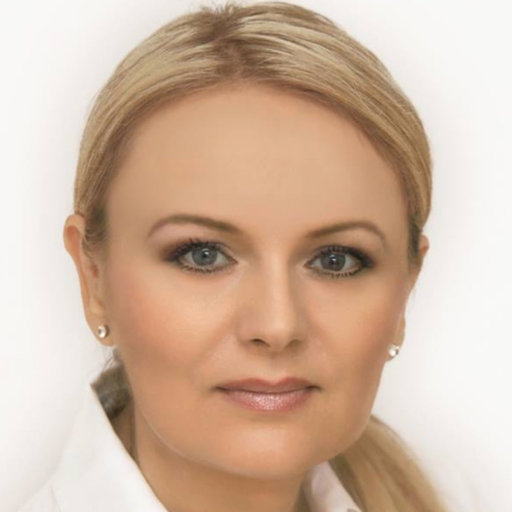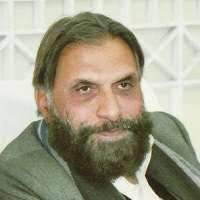Sessions
Advanced Orthopedic Surgery Techniques
Advances in orthopedic surgery continue to transform patient outcomes through minimally invasive procedures, precision navigation systems, and biologically enhanced healing strategies. Modern surgical approaches such as arthroscopy, robotic-assisted joint repair, and 3D-printed implants offer improved accuracy, reduced recovery time, and greater long-term functionality. Surgeons now integrate computer-guided tools and augmented visualization to enhance decision-making during complex procedures involving bones, joints, and soft tissues. The rise of regenerative techniques including platelet-rich plasma (PRP), stem cell therapy, and biologic scaffolds—further supports tissue restoration and reduces the need for extensive surgical interventions. These advancements also help improve postoperative mobility, decrease complications, and shorten rehabilitation time. As orthopedic technology continues to evolve, the focus remains on improving precision, reducing patient burden, and enabling faster return to normal activities. Continuous research, innovation, and clinical collaboration are essential for advancing surgical excellence and achieving consistent, high-quality outcomes in the treatment of orthopedic conditions.
Musculoskeletal Disorders & Rehabilitation
Musculoskeletal disorders continue to be a major cause of disability worldwide, affecting muscles, bones, ligaments, tendons, and joints. Rehabilitation plays a vital role in restoring function, reducing pain, and preventing long-term disability. Current approaches integrate exercise therapy, soft tissue mobilization, ergonomic interventions, and functional retraining to enhance strength and mobility. Advanced diagnostic tools such as gait analysis, musculoskeletal ultrasound, and motion capture systems enable therapists to develop more individualized treatment plans. Rehabilitation strategies now focus on combining mechanical correction with neuromuscular re-education to restore balance and coordination. Lifestyle modification, workplace adjustments, and preventive strategies also help reduce recurrence and improve long-term outcomes. With the integration of digital monitoring tools and personalized rehabilitation pathways, musculoskeletal care is shifting toward proactive, patient-centered, and sustainable recovery models that enhance quality of life across all age groups.
Sports Medicine & Injury Recovery
Sports medicine focuses on optimizing performance, preventing injuries, and supporting efficient rehabilitation for athletes and physically active individuals. Advancements in biomechanics, wearable performance trackers, and real-time movement analysis allow professionals to identify biomechanical risks before injuries develop. Treatment strategies now emphasize early diagnosis, accelerated healing protocols, and functional movement retraining to ensure safe return to sport. Injury recovery integrates physiotherapy, strength conditioning, proprioceptive training, and sport-specific drills to restore full performance capabilities. Techniques such as cold therapy, dry needling, manual therapy, and regenerative methods like PRP injections support faster tissue repair. Mental conditioning and psychological support have also become essential components of modern sports rehabilitation, helping athletes maintain confidence during recovery. With the growing emphasis on injury prevention programs and evidence-based therapeutic techniques, sports medicine continues to push the boundaries of performance optimization and sustainable athletic excellence.
Physiotherapy Innovations & Evidence-Based Practice
Physiotherapy is rapidly evolving with new technologies, improved treatment frameworks, and expanding clinical research. Evidence-based practice guides therapists in choosing interventions supported by strong scientific data, enhancing treatment effectiveness and patient outcomes. Innovations such as shockwave therapy, neuromuscular electrical stimulation, and biofeedback devices offer modern approaches for pain reduction, muscle activation, and motor retraining. Digital physiotherapy platforms provide remote consultations, exercise monitoring, and patient education to improve adherence. Interdisciplinary collaboration ensures that treatment integrates biomechanics, neuroscience, and movement science to address complex conditions comprehensively. Patient-centered approaches emphasize individualized treatment planning, goal-oriented therapy, and continuous outcome tracking. As physiotherapy continues to integrate new technologies with clinical expertise, practitioners are increasingly able to deliver efficient, high-quality, and measurable rehabilitation interventions tailored to each patient’s functional needs.
Spine Care, Pain Management & Mobility Restoration
Spine care is a critical area of orthopedics and physiotherapy, focusing on conditions such as disc herniation, spinal stenosis, postural dysfunction, and chronic back pain. Pain management strategies now combine manual therapy, exercise rehabilitation, neural mobilization, and targeted strengthening to reduce discomfort and improve spinal alignment. Advanced tools like spinal traction systems, ultrasound therapy, and electromyographic assessments support precise diagnosis and treatment planning. Mobility restoration emphasizes core stabilization, movement retraining, and functional conditioning to enhance spine health. Psychological factors such as stress and anxiety are also addressed, recognizing their strong influence on chronic pain patterns. With growing awareness of non-surgical treatment options, integrated spine care approaches prioritize long-term pain reduction, improved biomechanics, and sustainable mobility. This comprehensive strategy empowers patients to return to daily activities with confidence and reduced risk of recurrence.
Joint Replacement & Regenerative Therapies
Joint replacement technology has evolved significantly, offering enhanced mobility and durability for patients with severe arthritis or degenerative conditions. Innovations such as customized implants, robotic-assisted alignment, and minimally invasive surgical approaches allow for greater accuracy and faster recovery. Regenerative therapies are emerging as complementary or alternative options, aiming to repair damaged tissues and delay the need for surgery. Techniques such as stem cell therapy, PRP, hyaluronic acid injections, and biologic scaffolds support joint healing and reduce inflammation. Rehabilitation after joint procedures focuses on restoring strength, flexibility, balance, and functional movement. With advancements in biomechanics, biomaterials, and biological treatments, the field continues to move toward personalized, less invasive, and more sustainable joint preservation and replacement solutions.
Pediatric Orthopedics & Growth-Related Conditions
Pediatric orthopedics addresses conditions affecting children and adolescents, including congenital deformities, growth abnormalities, fractures, scoliosis, and developmental movement disorders. Early diagnosis is essential to ensure proper bone growth, joint function, and mobility. Treatment strategies prioritize non-invasive or minimally invasive methods, including bracing, casting, corrective exercises, and child-specific rehabilitation programs. Pediatric physiotherapy focuses on enhancing motor skills, balance, coordination, and overall mobility. Family involvement is encouraged to ensure continuity of care and adherence to home programs. As children grow, treatment plans evolve to support proper musculoskeletal development and avoid long-term complications. With increasing awareness of early intervention and advanced diagnostic tools, pediatric orthopedic care continues to improve outcomes through personalized, growth-sensitive approaches.
Geriatric Orthopedics & Fall Prevention
Geriatric orthopedics focuses on age-related musculoskeletal conditions such as osteoporosis, arthritis, frailty, and mobility impairments. With the global elderly population increasing, the demand for specialized interventions continues to rise. Rehabilitation strategies prioritize strength training, balance exercises, joint mobility, and functional conditioning to maintain independence. Fall prevention programs use gait assessments, postural analysis, home safety evaluations, and assistive devices to reduce risk. Multidisciplinary care—including orthopedic specialists, physiotherapists, nutritionists, and geriatricians—ensures comprehensive management of chronic conditions. Pain relief methods, low-impact exercise programs, and lifestyle modifications contribute to better quality of life. As aging-related challenges grow, geriatric orthopedic care plays a critical role in promoting healthy aging, reducing fall-related injuries, and supporting long-term wellness.
Trauma, Fracture Management & Emergency Orthopedics
Trauma and fracture management require rapid diagnosis, stabilization, and targeted intervention to prevent complications and restore function. Emergency orthopedics involves treating injuries caused by accidents, falls, and high-impact trauma. Advances in imaging, surgical fixation techniques, and external stabilization devices support more precise and efficient care. Rehabilitation begins early, emphasizing controlled movement, pain management, and gradual strengthening to accelerate healing. Functional recovery focuses on restoring full mobility, preventing stiffness, and retraining movement patterns. Multidisciplinary coordination between emergency teams, surgeons, physiotherapists, and rehabilitation specialists ensures seamless care throughout the recovery process. With increasing awareness of timely intervention, trauma management continues to improve survival rates and long-term outcomes.
Neuromuscular Rehabilitation & Movement Science
Neuromuscular rehabilitation targets conditions affecting nerve-muscle coordination, including stroke, multiple sclerosis, Parkinson’s disease, and spinal cord injuries. Treatment emphasizes motor retraining, balance improvement, and neuroplasticity-based techniques to enhance functional independence. Movement science principles guide therapists in analyzing motor patterns, identifying impairments, and designing corrective interventions. Tools such as functional electrical stimulation, gait training devices, and biofeedback systems support improved muscle activation and control. Rehabilitation pathways focus on task-specific training, coordination development, and endurance building. As research continues to highlight the brain's ability to reorganize after injury, neuromuscular rehabilitation plays a crucial role in maximizing recovery potential and promoting long-term functional improvement.
Robotics, AI & Digital Technologies in Physiotherapy
Robotic and digital technologies are redefining modern rehabilitation by offering high-precision, data-driven treatment solutions. Robotic exoskeletons, gait trainers, and automated movement systems enable repetitive, controlled motion for patients recovering from neurological or musculoskeletal conditions. Artificial intelligence enhances clinical decision-making, outcome prediction, and personalized therapy planning. Digital tools such as wearable sensors, tele-rehabilitation platforms, and mobile exercise apps allow clinicians to monitor progress remotely and adjust treatment in real time. These technologies improve patient engagement, increase therapy accuracy, and accelerate recovery. As digital solutions become more accessible, physiotherapy is moving toward hybrid care models that blend hands-on expertise with cutting-edge technology for superior outcomes.
Orthopedic Biomechanics & Functional Assessment
Biomechanics plays a critical role in understanding how forces act on the body during movement. Functional assessment tools—such as 3D gait analysis, pressure mapping, and movement capture systems—help clinicians identify abnormalities in posture, gait, and joint function. These insights guide targeted interventions to correct dysfunctional patterns and enhance performance. Orthopedic biomechanics supports the development of personalized treatment plans, injury-prevention strategies, and optimized rehabilitation programs. By integrating scientific analysis with clinical expertise, biomechanics enables more accurate diagnoses, better functional outcomes, and improved long-term musculoskeletal health.
Post-Surgical Rehabilitation & Mobility Training
Post-surgical rehabilitation is essential for restoring strength, mobility, and full function after orthopedic procedures such as joint replacement, fracture fixation, or tendon repair. Early mobilization, controlled exercise progression, and pain management form the foundation of recovery. Therapists design individualized programs that include strengthening, flexibility training, balance exercises, and functional retraining. Mobility training helps patients regain confidence in walking, performing daily tasks, and returning to work or sport. Consistent monitoring and outcome assessment ensure safe recovery and reduce the risk of complications. As surgical techniques advance, rehabilitation continues to play an integral role in optimizing recovery and enhancing long-term patient satisfaction.
Manual Therapy, Manipulation & Exercise Science
Manual therapy remains a cornerstone of physical rehabilitation, utilizing hands-on techniques such as joint mobilization, soft tissue manipulation, and myofascial release to reduce pain and improve mobility. When combined with evidence-based exercise science, these techniques support long-lasting functional improvement. Exercise prescription focuses on strength, endurance, flexibility, and motor control, tailored to each patient’s needs. Manual therapy also complements therapeutic exercise by enhancing tissue response, reducing movement restrictions, and facilitating neuromuscular activation. The integration of manual techniques with structured exercise programs provides a holistic approach to restoring physical function and preventing recurrent injuries.
Orthopedic Imaging, Diagnostics & Clinical Decision-Making
Orthopedic imaging plays a vital role in accurate diagnosis and treatment planning. Modalities such as X-rays, MRI, CT scans, and musculoskeletal ultrasound provide detailed insights into bone and soft tissue conditions. Advanced diagnostic techniques help identify structural abnormalities, guide injections, and monitor healing progress. Clinical decision-making integrates imaging findings with physical assessment, patient history, and functional evaluation to determine the best intervention strategies. Improved diagnostic precision allows clinicians to tailor treatment plans, reduce unnecessary procedures, and enhance recovery outcomes. As imaging technology continues to advance, orthopedic diagnostics remains essential for delivering high-quality, evidence-based musculoskeletal care.
Market Analysis
Orthopedics and physiotherapy together form an essential foundation for diagnosing, treating, and rehabilitating conditions that affect the bones, joints, muscles, ligaments, nerves, and overall movement system. As musculoskeletal disorders continue to rise globally due to aging populations, sedentary lifestyles, sports injuries, and occupational stress, the combined role of orthopedic medicine and physiotherapy has become more critical than ever. Orthopedics provides advanced medical and surgical solutions for fractures, joint degeneration, spinal disorders, congenital deformities, trauma, and sports-related injuries, while physiotherapy focuses on restoring movement, reducing pain, and enhancing functional independence through evidence-based rehabilitation. Modern orthopedic care has evolved with breakthroughs such as minimally invasive surgery, robotic-assisted procedures, navigation-guided joint replacements, regenerative therapies, biologics, and enhanced imaging technologies. These innovations allow for greater surgical precision, reduced complications, faster recovery, and long-term joint preservation. Physiotherapy complements these advancements through targeted rehabilitation protocols, manual therapy, therapeutic exercise, neuro-motor retraining, balance enhancement, posture correction, and preventive care. Advanced tools like gait analysis, musculoskeletal ultrasound, electromyography, and digital motion tracking further support accurate assessment and personalized treatment planning. Together, these disciplines ensure comprehensive care from diagnosis to full functional recovery.
Rehabilitation plays a central role in enabling patients to return to daily activities following orthopedic injuries or surgical procedures. Tailored physiotherapy programs focus on improving strength, mobility, flexibility, endurance, and coordination. For athletes, sports physiotherapy includes performance optimization, injury prevention programs, and sport-specific retraining that ensures safe return to play. Spine rehabilitation addresses chronic back and neck pain through core stabilization, movement re-education, ergonomic corrections, and manual techniques that help restore postural balance. In the case of joint replacements, fracture repairs, or ligament reconstructions, early physiotherapy accelerates tissue healing and minimizes postoperative stiffness. Geriatric orthopedics and physiotherapy have gained significant importance due to the global rise in older adults. Age-related issues such as osteoporosis, arthritis, frailty, and fall risk require specialized intervention that promotes mobility and independence. Similarly, pediatric orthopedics focuses on growth-related disorders, congenital abnormalities, developmental delays, and early-life injuries, ensuring healthy musculoskeletal development. Physiotherapy supports children through play-based motor training, gait correction, and neurodevelopmental therapy. Technological advancements continue to transform both orthopedic practice and rehabilitation. Robotic exoskeletons, AI-driven movement analysis, virtual reality rehabilitation, wearable sensors, and tele-rehabilitation platforms offer innovative ways to deliver precise, engaging, and measurable therapy. Regenerative medicine, including stem cells and platelet-rich plasma, provides non-surgical options for joint repair, while digital physiotherapy tools support long-term patient engagement and adherence. The integration of holistic approaches including pain science education, lifestyle modification, nutrition support, and psychological well-being enhances recovery outcomes and reduces recurrence. Orthopedics and physiotherapy are increasingly adopting multidisciplinary models of care, bringing together surgeons, rehabilitation specialists, neurologists, sports scientists, and pain management experts to deliver comprehensive solutions.
Past Conference Report
ortho2025
Ortho2025 Invites all the participants by presenting the latest Scientific Improvement and technologies in the field of Orthopedics, Rheumatology, and Musculoskeletal Disorders. Ortho2025 welcomes all the eminent researchers and scholars around the globe to be part of the most awaited event of 2025 “18th Global Summit on Orthopedics and Physiotherapy” scheduled to be held on May 19-20, 2025 in Zurich, Switzerland, The Theme of the conference is " Challenging Opportunities in the field of Orthopedics and Physiotherapy"We welcome all the Honorable Orthopedic Surgeons, Rheumatologists and other related specialist, Medical Students, Research Scholars, Young Researchers, Associations, Health Professionals, and collaborators to our 18th Global Summit on Orthopedics and Physiotherapy. Ortho2025, provide an international platform to all the Speakers, Delegates, Surgeons, Research scholars, Orthopedic Physicians, Orthopedic Surgeons, Rheumatologists, Orthopedic and Rheumatology Research Fellows Orthopedic and Rheumatology Faculty, Directors and Chair Persons, Health Care Professionals, Orthopedic and Rheumatology Medical Students, Orthopedics Medical Colleges, Universities, Orthopedics Devices Designers, Industrial Professionals, Physical Therapists, Business Entrepreneurs, Training Institutes, Software making, Manufacturing Medical Devices Companies, Orthopedics, and Rheumatology Research Institutes, Orthopedics and Rheumatology Societies & Associations to gather in as one as a Medical professional to share their new technologies, Innovations, and Researches.
Past Reports Gallery








